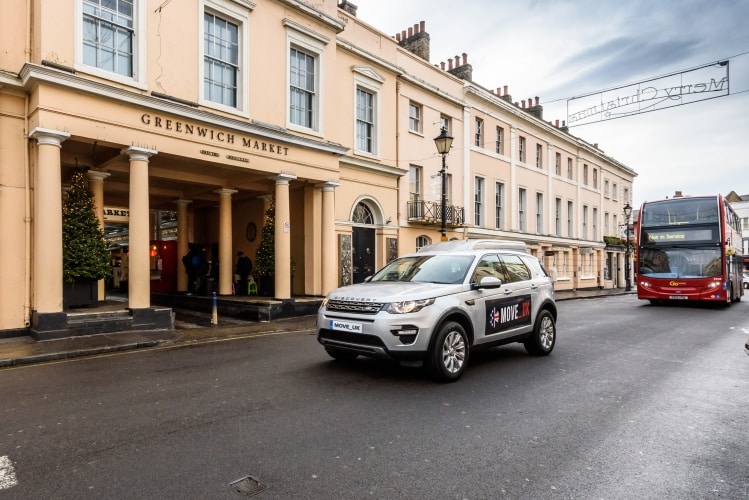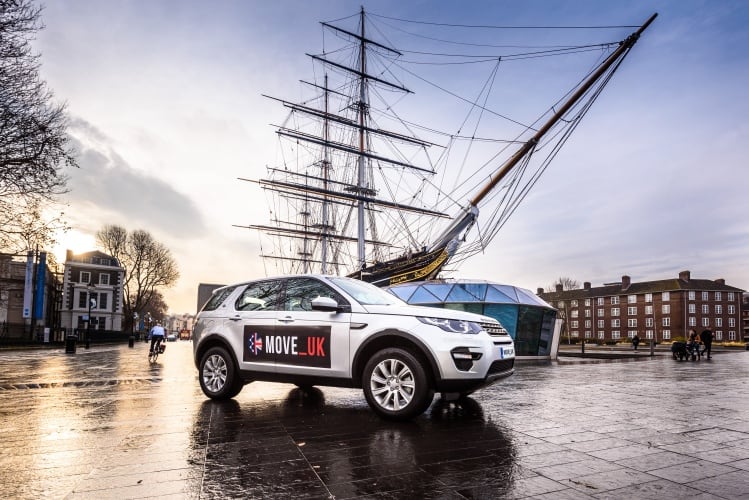Collaborate to Innovate 2018
Category: Data & connectivity
Winner: Move_UK
Partners: Robert Bosch Limited, Jaguar Land Rover Limited, TRL Limited, The Floow Limited, Direct Line Insurance Services Limited, Royal Borough of Greenwich
Running since August 2016, the multi-year project is designed to advance the progress of autonomous driving technologies. Led by Robert Bosch Limited, it features a diverse range of partners, including the Transport Research Laboratory (TRL), Direct Line, The Floow, the Royal Borough of Greenwich and Jaguar Land Rover (JLR).

“Bosch has a very close working relationship with JLR,” explained Simon Morley, Move_UK project lead at Bosch. “We work with them on various technologies.”
At the heart of the project is the concept of “Connected Validation”, essentially a new method for validating Automated Driving Systems (ADS). Huge swathes of the automotive sector are working on autonomous technology, yet coherent frameworks for testing and approving the rapid advances remain elusive. Bosch and its partners are seeking to change that.
“We’ve got a vehicle fitted with a range of sensors, namely a video camera and a variety of radar sensors, which have been added in the latter stages of the project,” said Morley. “In the back, we’ve got a data recording system. The car, via these sensors, generates a large amount of information, and that information is passed to the various parts of the car around what they call a CAN (Controlled Area Network).”
The CAN allows all the sensors to communicate with one another and interact in harmony. Due to the enormous volume of data that the sensor suite captures, only snapshots of this interaction are stored on the vehicle’s recording system.
“The crux of the project is the fact that there is so much data being generated – particularly as we go to higher levels of autonomy – that it’s impossible to actually analyse it all,” Morley explained. “The data recording system in the back of the car is much more intelligent than just a big hard disk drive. We’re recording the data based on events which are critical to the testing validation of driver assistance systems.”
High-value data is immediately transferred to the cloud, with larger volumes of less crucial data downloaded via Wi-Fi once the vehicle is back at its Greenwich base. The cloud data generally consists of information pertaining to events where autonomous technologies have been engaged, for example when automated emergency braking (AED) has been applied – or almost applied - by the vehicle.
Alongside AED, triggers such as harsh driver braking can also flag an event as noteworthy. One of the things that makes the project’s data so valuable, according to Morley, is that the vehicles are operating under normal driving conditions, going about everyday tasks. Sanitised data from a test track can only tell you so much. For high-level autonomy to be successful, real-world data from the streets is needed.

“We’re using production vehicles as a base,” said Morely. “In itself that might not sound exciting, but it’s highly relevant because the drivers from Greenwich are driving these vehicles as they would any other vehicle…it’s real-world driving and that’s the power of the project.”
According to Morley, one of the benefits of the Move_UK collaboration was having a diverse set of viewpoints, with each member coming at the project from a slightly different angle. Bosch and JLR are looking to future development, while Direct Line and The Floow are more focused on risk factors.
“Likewise, TRL are looking at it very much from a regulatory point of view,” he said. “How can this method we’re developing potentially be used in the future to design regulation and type-approval tests for these systems? Because obviously, people are starting to introduce these systems on to the marketplace, but the legislation is several years behind.
“Move_UK is not just a regular R&D project, where a report will be produced and put on the shelf. This is actually a project where the data and results will be used for the development of new automated driving software. And that was not necessarily something that we set out to do.”
The runners-up
WindTwin – TWI, Agility3, Brunel University London, Dashboard, ESI
A sensor-based digital twin platform to optimise wind turbine performance
LIMPET – Dashboard, Penspen, NEL, Exeter University
IoT solution for advanced oil & gas pipeline monitoring
ULTRAWAVE - Lancaster University, Goethe University of Frankfurt, University of Rome Tor Vergata, UniversitatPolitecnica de Valencia, Ferdinand Braun Institute, OMMIC, HFSE and Fibernova
Pan-European project to establish superfast wireless data speeds
Simplified Coherent Technologies for Future Optical Access Networks – UCL, University of Cambridge, Huawei Technologies, EPSRC
An innovative networking solution to deliver fibre broadband to the home over the ‘last mile’
OPTIMISED - Laing O'Rourke, Alstom, University of Nottingham, Keonys, Simplan
A big data platform to boost planning simulation and energy management











McMurtry Spéirling defies gravity using fan downforce
Ground effect fans were banned from competitive motorsport from the end of the 1978 season following the introduction of Gordon Murray's Brabham...